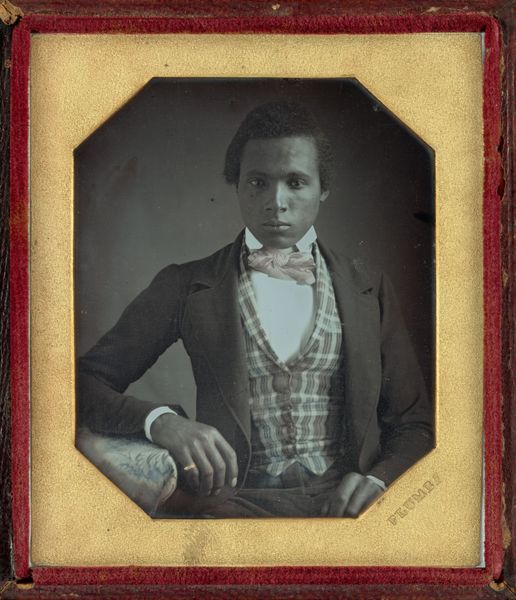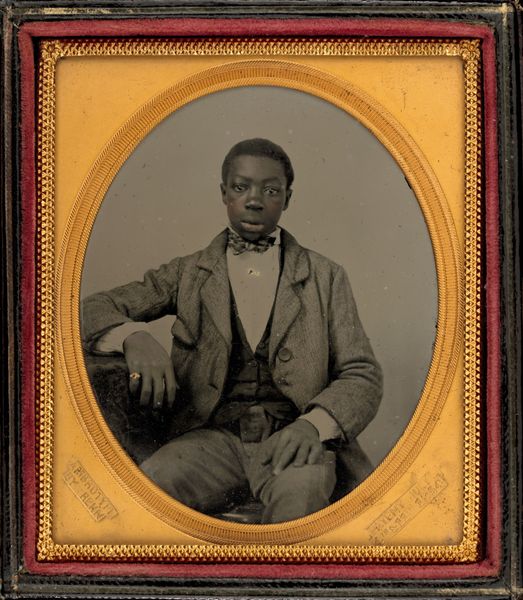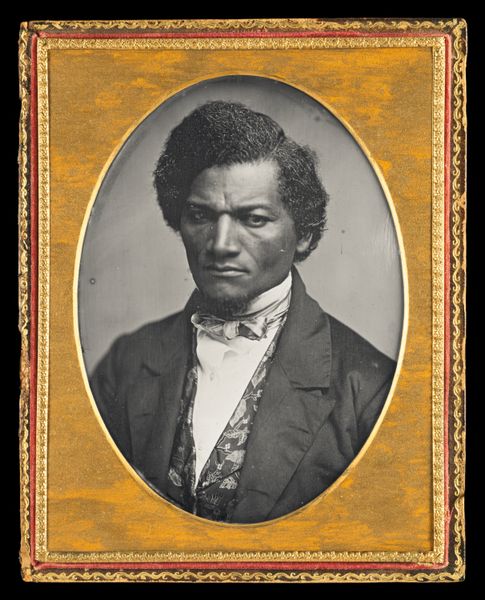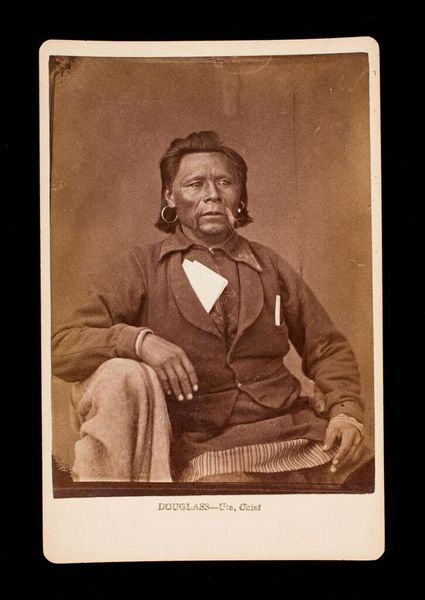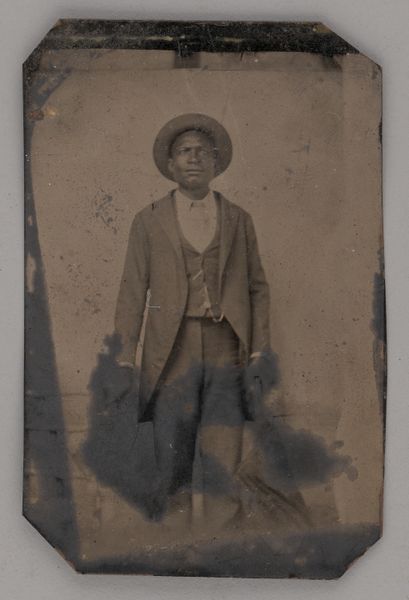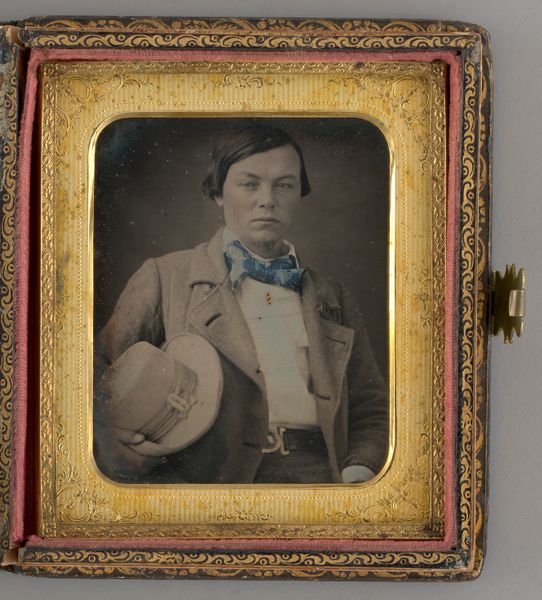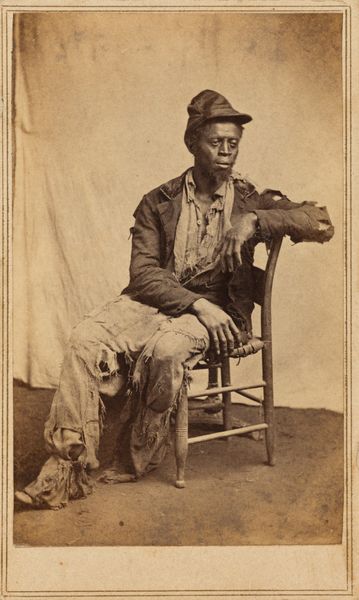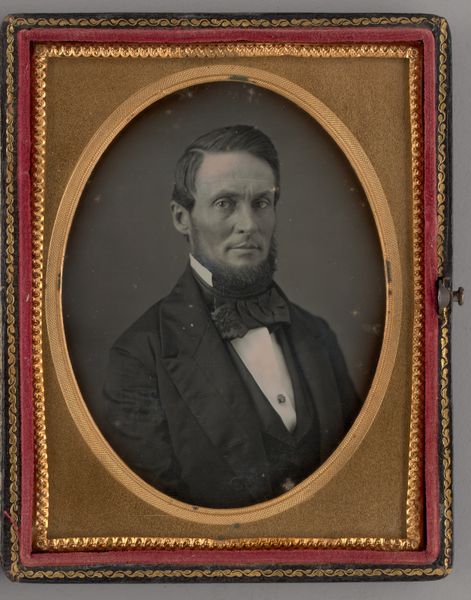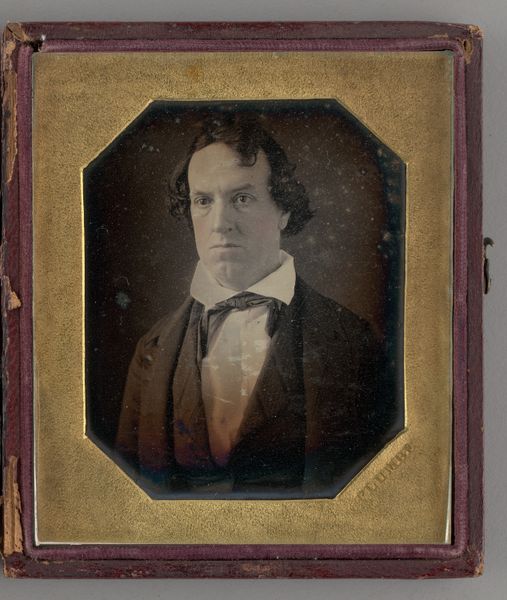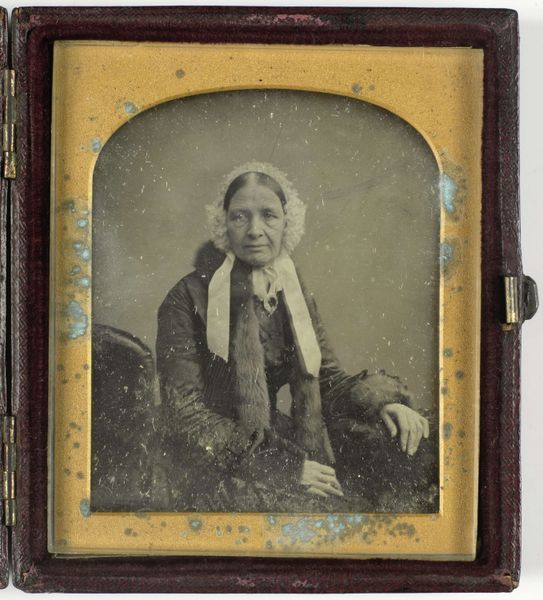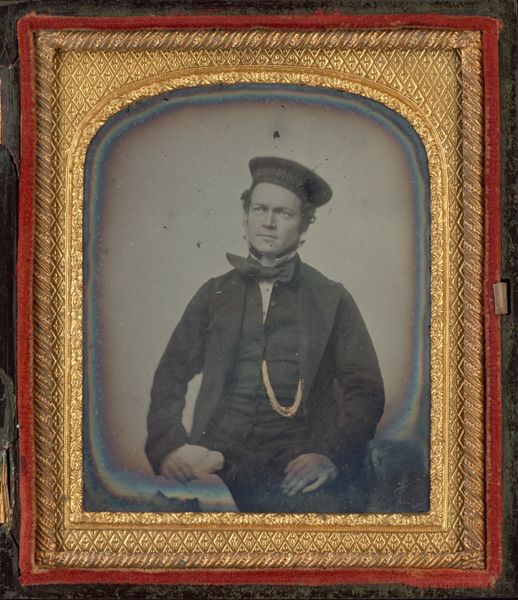
Dimensions: image (visible): 6.8 × 5.5 cm (2 11/16 × 2 3/16 in.) mat: 8.2 × 6.8 cm (3 1/4 × 2 11/16 in.) case (closed): 9.2 × 8.1 × 1.6 cm (3 5/8 × 3 3/16 × 5/8 in.)
Copyright: National Gallery of Art: CC0 1.0
Editor: Here we have a daguerreotype portrait of a man, dating back to around 1850, by John Plumbe Jr. The detail is astounding for such an early photographic process! What strikes me most is how the lighting highlights the textures and form of his face and clothes. What stands out to you when you look at this image? Curator: Formally speaking, I'm drawn to the careful manipulation of light and shadow. Notice how the stark contrast illuminates the subject's features while simultaneously creating depth within the limited frame. The octagonal mat is not simply decorative, but creates another spatial depth using the reflection. How would you interpret the choice to contain this portrait in this geometric, reflective space? Editor: I guess that using an unusual frame gives importance to the work? Do you mean like using framing in framing? What can that achieve? Curator: Precisely. It’s a kind of structural emphasis. The choice underscores the formal qualities of the composition. Reflect on the subject's attire. The crisp white collar against the darker suit draws the eye upward to the face, thereby controlling the gaze and constructing an ideal. Considering the materials – a polished silver plate treated with chemicals – how does the materiality of the daguerreotype itself influence our interpretation? Editor: It makes it feel somehow... fragile and precious? Because it is unique and one-off... but how can you connect that fragility to the actual subject? Curator: Consider the sitter's composed expression and elegant attire. Do these contribute to a particular reading, given the context of portraiture during that era and the sitter's status as a black man during slavery and racial tension? Perhaps the inherent delicacy of the daguerreotype mirrors the precariousness of identity itself. Editor: That’s a great observation; thinking about how the photographic medium can be revealing. I will never look at portraits the same way. Curator: Indeed. By considering the formal elements, the materiality, and the structure within a structure, we arrive at a richer, more nuanced reading of this portrait.
Comments
No comments
Be the first to comment and join the conversation on the ultimate creative platform.
